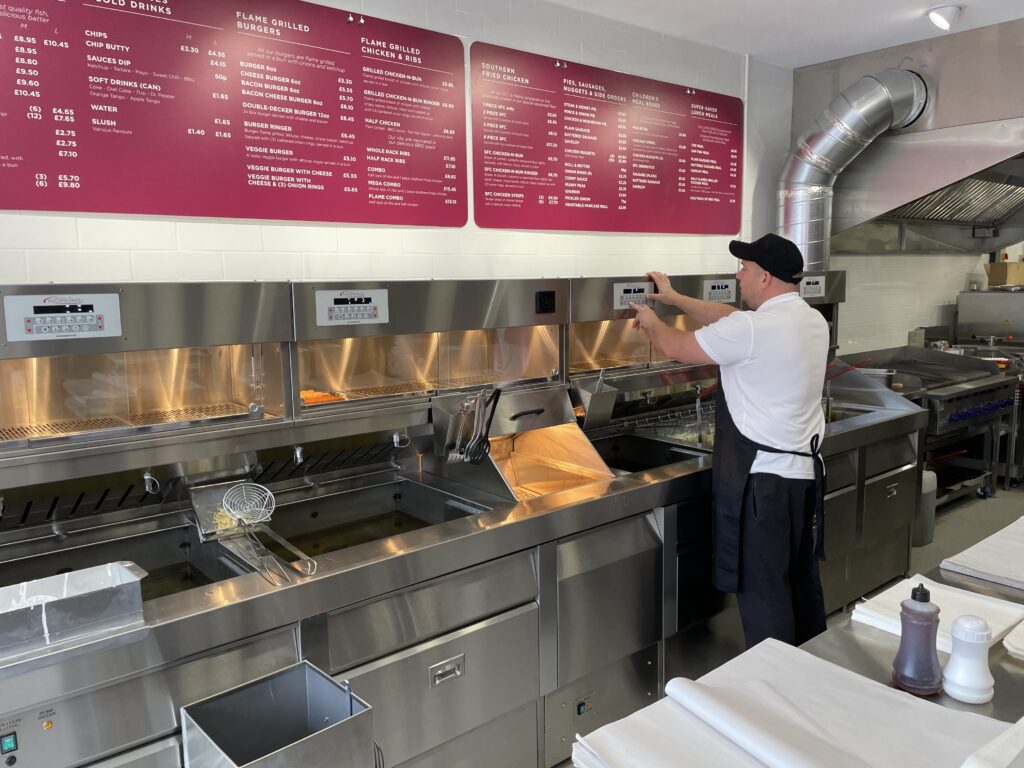Choosing the range layout that best suits your fish and chip shop is one of the most important decisions you’ll make. Getting it right can improve efficiency, enhance customer experience and impact staffing costs
When it comes to frying range layouts, operators have four options to consider: wall, counter, island, and L-shaped. The best choice depends on several factors, including available space, staffing needs, customer interaction preferences, and the volume of business a shop handles.
Planning the overall shop layout is critical, as Rob Furey, MD at range manufacturer Florigo, emphasises: “The layout of the shop is as important as the make of range that you buy. If you don’t lay that shop out properly and you need an additional member of staff to man it, that could have paid for your range. With the cost of everything going up, shops need to run with the least amount of staff possible to remain viable and profitable.”
It’s important to recognise that the demands of a business may well change over time and, in turn, will influence the style of range that may suit a business. Tony Ropke, sales and marketing manager at Leeds-based Hopkins, comments. “Investing in a new frying range presents the opportunity to reimagine the layout of your kitchen. Many clients come to us because their businesses have changed due to growth and changes in deliveries and collections. Their previous range layouts are no longer suitable, so they are seeking new options to accommodate these changes.”

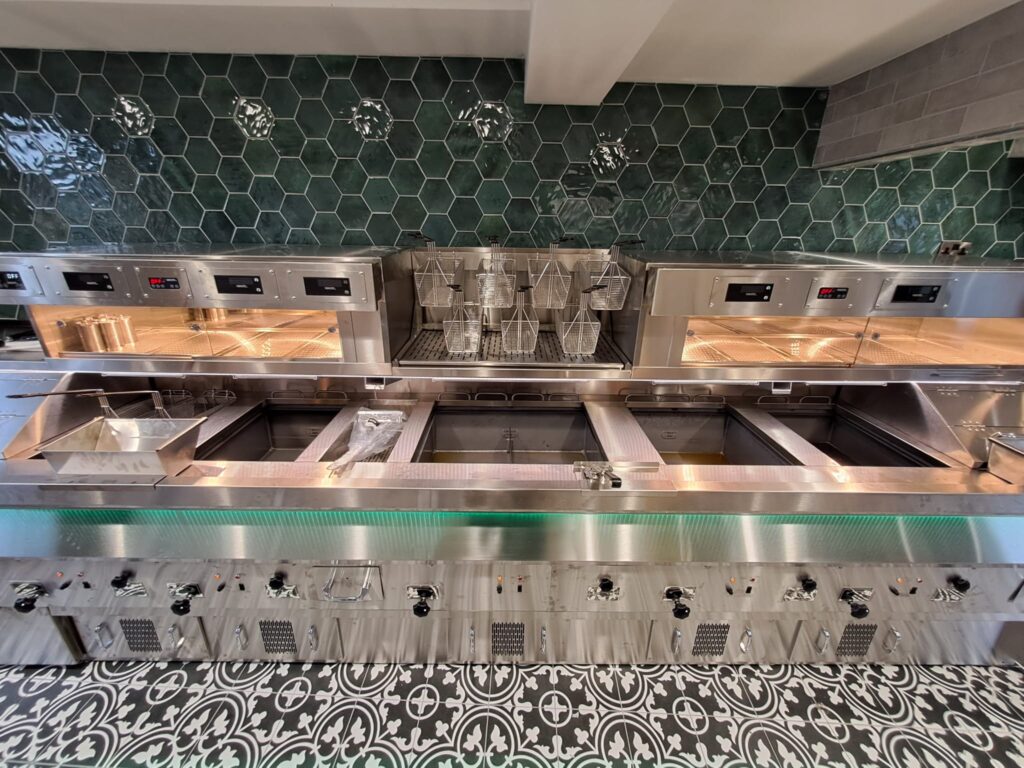
Wall ranges
Wall ranges, as the name suggests, run across a wall of a shop. This layout typically has the frier and server working side by side or in a back-to-back setup. One advantage of this is that it gives a dedicated counter with plenty of space for wrapping and serving, but it also incorporates the range into the shop so it functions as a feature rather than just a piece of cooking equipment.
It’s a trend increasingly seen by Jack Price, sales manager at range manufacturer Henry Nuttall, who says wall ranges are gaining in popularity: “Wall ranges were often only favoured due to limited space in a shop. However, the open-plan kitchen trend has made it more popular for all kitchens to follow suit. Plus, with LED lighting, OLED controllers and powder coating, we can make the range look great for operators.”
A wall range is great for adding theatre too as customers have the opportunity to see their food going in to the pan and being cooked to order. “It gives provenance to the freshness of the food,” explains Florigo’s Rob Furey.
Also, a wall range can be run with less staff, as Hopkin’s Tony Rooke explains: “During quieter times, one person can manage both frying and customer service, while during busier periods, staff can assist at the counter, allowing the fryer to focus on their work.”
Whilst a wall range is a great option for a modern fish and chip shop, it should be pointed out that it requires a clean and disciplined operator because every element of the cooking process is on show. “And remember, if you do go for a wall range, have your logo on the back of your uniform, not the front!” adds Rob Furey.
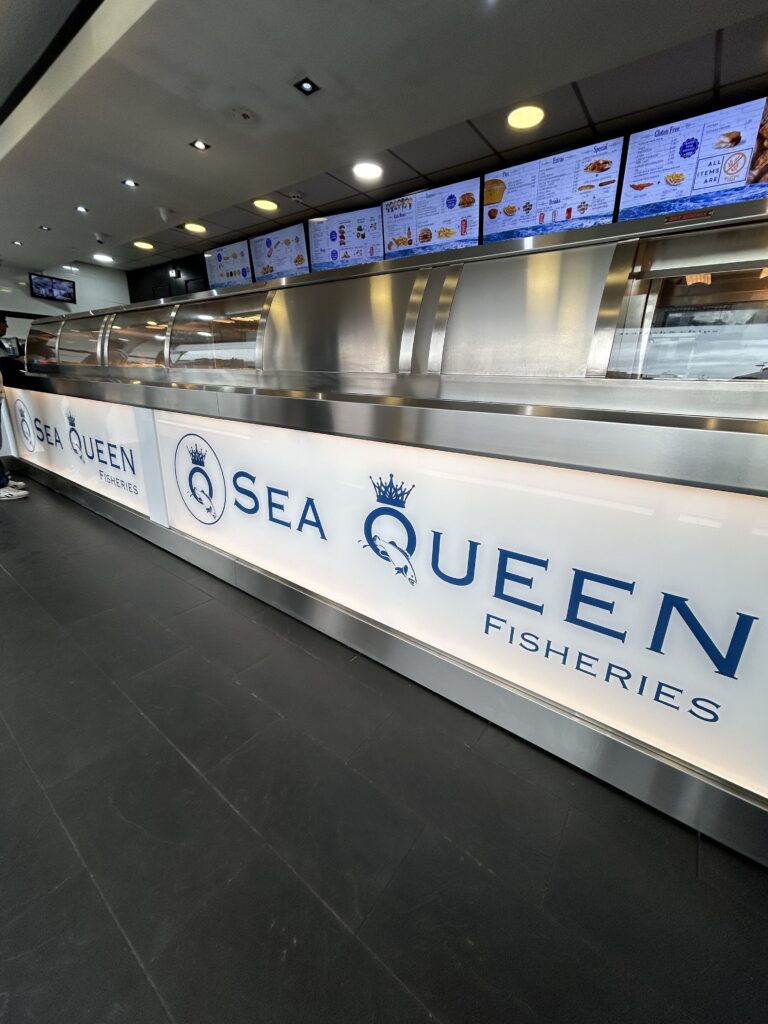
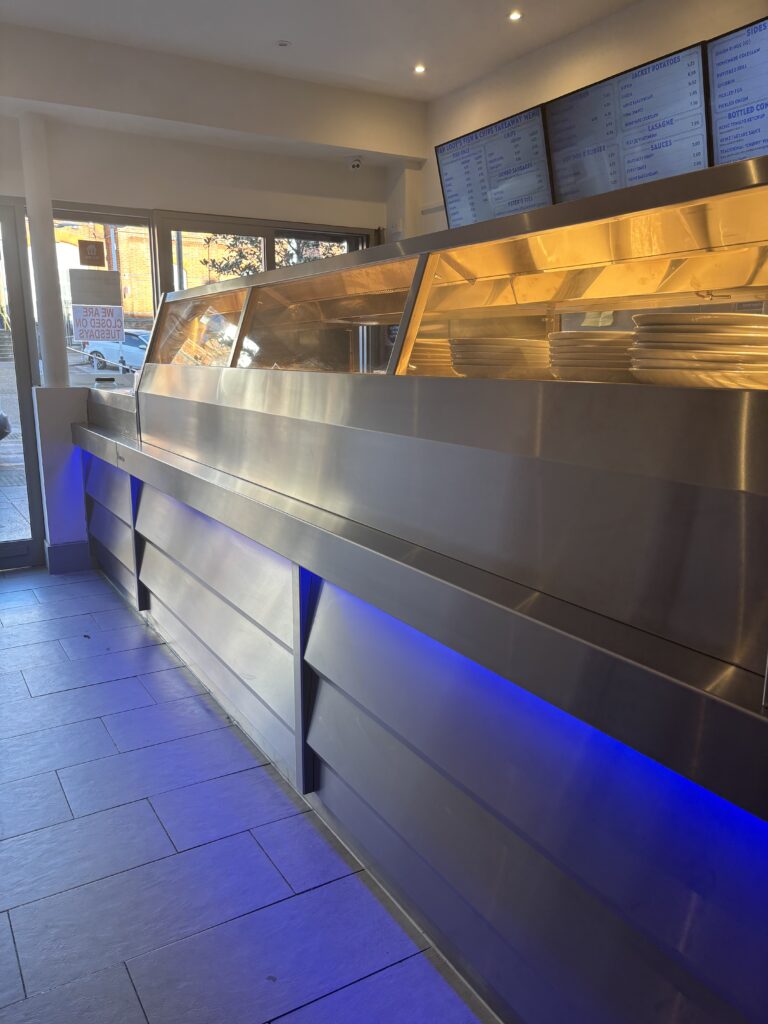
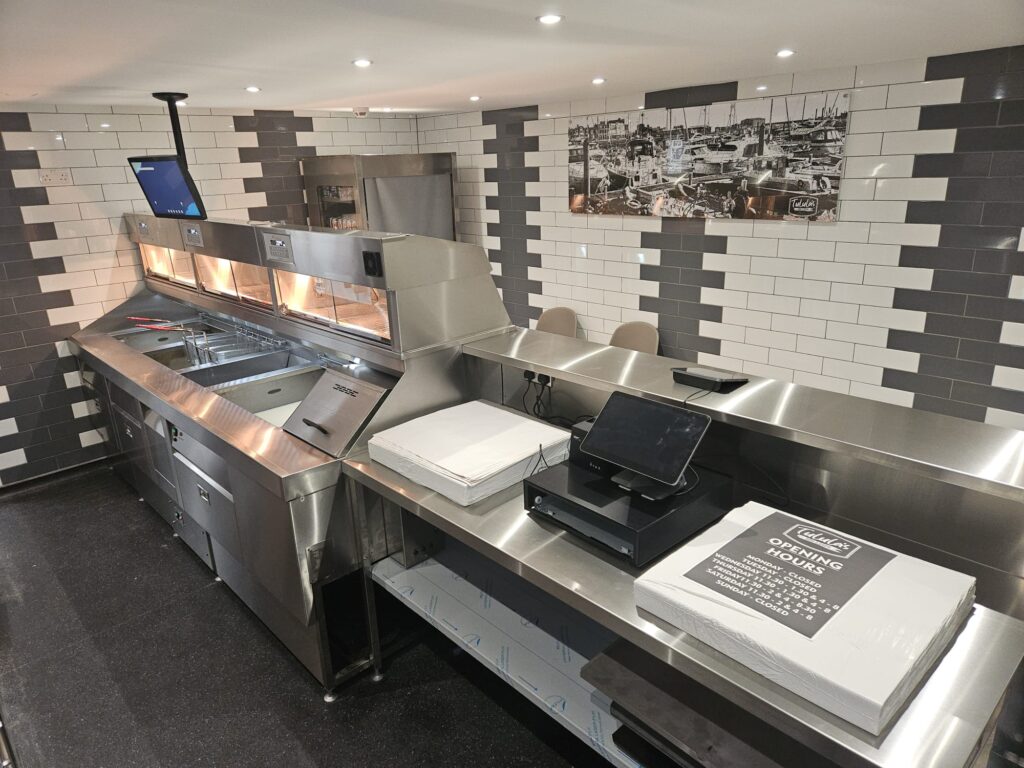
Counter ranges
For operators who want to maintain direct customer interaction, a counter range remains a strong choice as they are directly facing the customer. Nikki Williams, sales director, at KFE, which supplies Kiremko frying ranges, explains: “Counter ranges are great for a local community shop as the fryer/owner can interact with the customers.
“Although shops are moving towards cooking to order more these days, a counter range with hot boxes can really help with upselling as the food is directly in the customer’s eye line at the point of sale. A standard three pan counter range with a 1500mm counter will be approximately 4.5m long, so it’s a practical option for new developments that might be short on space.”
Jack Price from Henry Nuttall echoes this sentiment, emphasising their efficiency and visual appeal. “Counter ranges still remain the most popular range we manufacture. They have a good level of efficiency from frying to serving while maintaining proximity to the customers. Plus, with our curved glass displays and bespoke frontages, they really can make a great statement for your shop.”
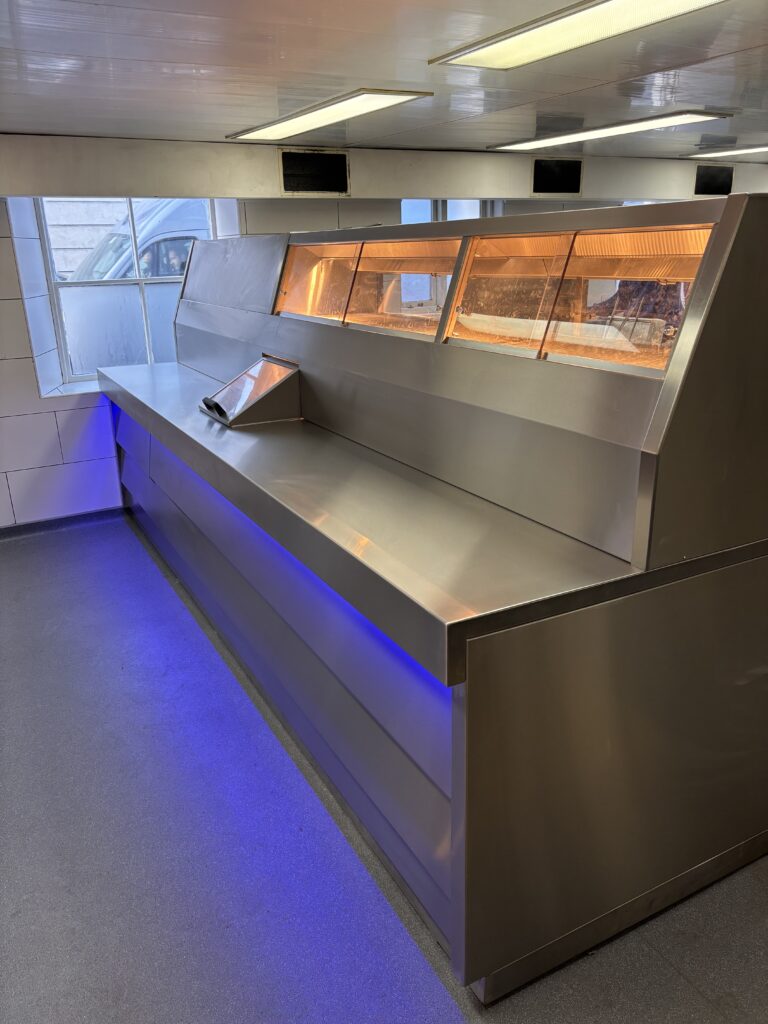
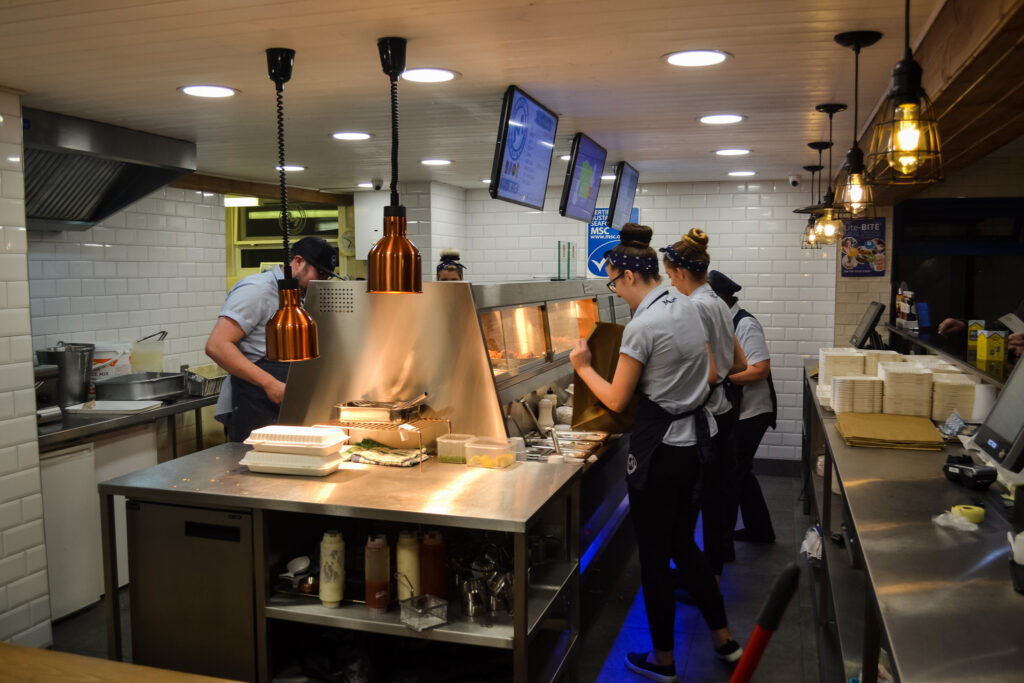
Island ranges
With an island range, friers work behind the range and servers work from the front, utilising chip boxes and top box cabinets which are accessible from both sides. This makes an island range ideal for high volume businesses, as cooked food can continually be fed through to serving staff at the front. However, it requires adequate space and staffing, as KFE’s Nikki Williams explains: “An island range is very good for busy shops as it works like a professional kitchen, giving each staff member their own station without the need for any crossover. However, it requires a lot of depth in the shop, as from the front door to the back of the range will need a minimum of five meters.”
An island range also requires a significant understanding of your throughput otherwise the added spend could be counter-productive. “If you’ve got a high volume shop, an island range is fine because you’ve got the serving staff out the way of the frying staff, and it allows food to be fed through efficiently,” says Rob Furey. “However, if Monday to Thursday is quiet, whatever you’ve saved by getting food out quickly will be lost by the additional member of staff needed to serve the front of the counter.”
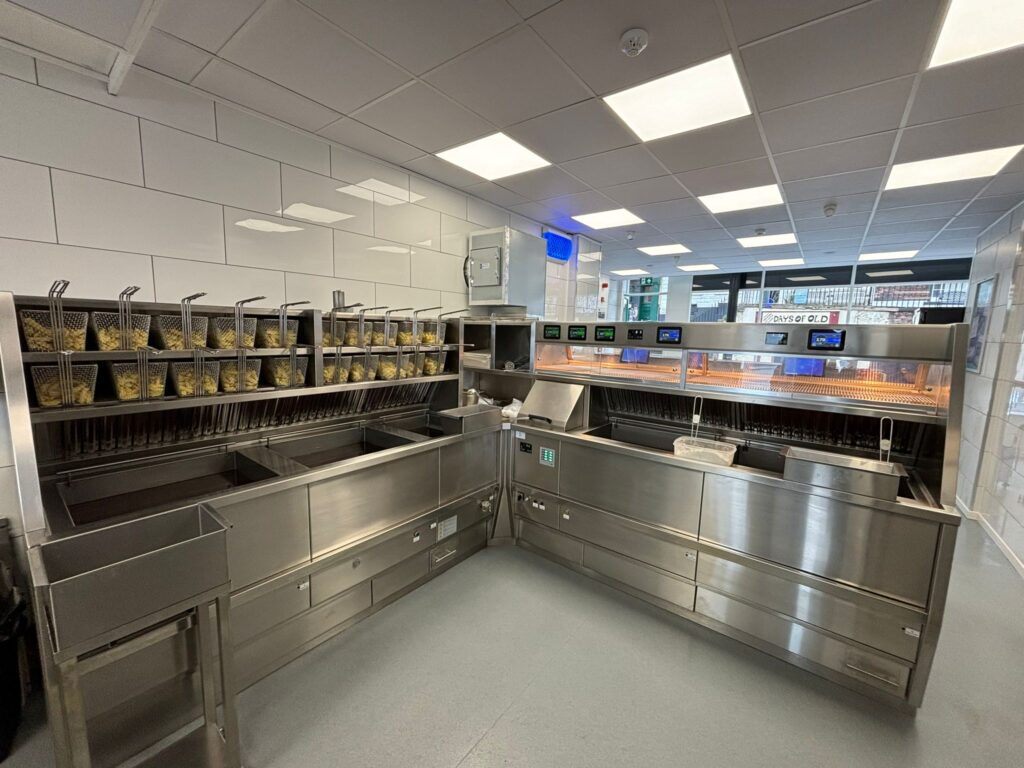
L-Shaped
For shops that need the efficiency of an island range but lack the space, an L-shaped range is the perfect compromise. Offering a combination of both an island and a wall range, they are very similar to island ranges in that they give everyone their own station.
“L-shaped ranges are an excellent solution for busy shops with limited space,” says KFE’s Nikki Williams. “They function as a complete kitchen, with the wall section typically featuring induction hobs or our Adieu grills. This setup allows operators to prepare popular items like smashed burgers or more cost-effective fish varieties, helping to offset the impact of rising cod and haddock prices on gross profit.”
Choosing the right frying range involves understanding your throughput, customer flow, and available space. Whether you opt for a counter range for its traditional appeal, a wall range for its open feel, an island range for high volume efficiency, or an L-shaped range for its versatility, getting it right will have a lasting impact on your shop’s success.
Before you make the decision, consult with the various range manufacturers and ask if they can put you in touch with reputable customers who can share their experiences of frying on different range set-ups. They may even extend an invite for you to fry with them. And, remember, be open minded. What suited your shop 10 years ago, might not now with the market moving on and labour costs so much higher.
Benefit from longer lasting oil and faster cooking with OiLChef
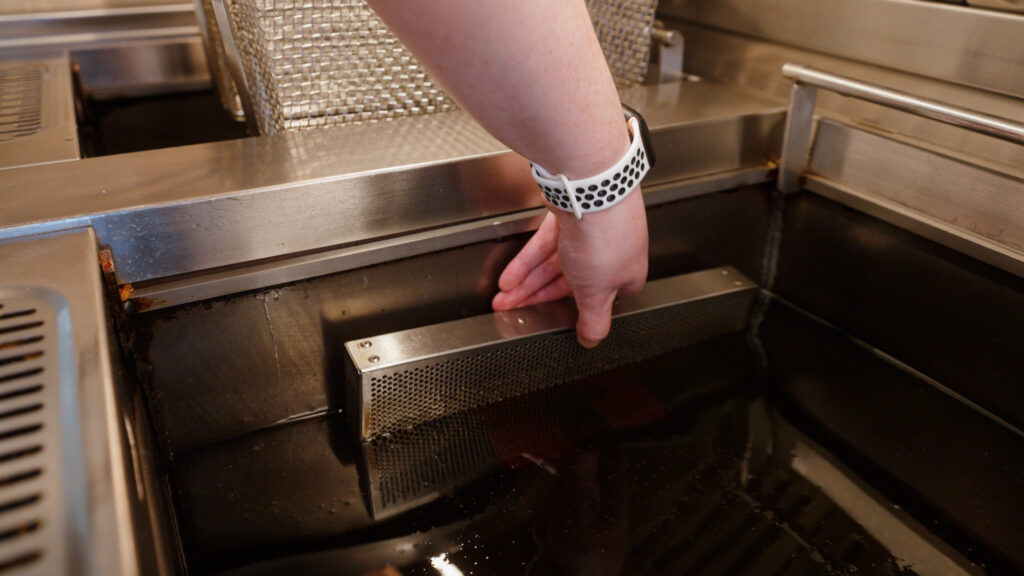
No matter the type of frying range, there is an OiLChef device to fit. The patented device uses proven technology to fry food quicker, extend the life of frying oil, reduce frying temperatures and save money for operators.
Simple to use, they fit into any pan and use catalytic converter technology to prolong the life of the oil and reduce the frequency of oil changes, which ultimately results in lower costs for operators.
Once placed into a pan, the OiLChef works to slow down the oxidation process of the oil, which occurs when it is heated, therefore maintaining the low viscosity of the oil and boosting its thermal conductivity. This means it lasts longer, food tastes better and is cooked faster – all important factors for operators working hard to ensure customers are happy with the food and service they provide.
David Hennighan, owner of Hennighan’s, which operates two fish and chip shops in Machynlleth, Powys, used to through away on average 1,120 litres of oil a year. Since using OilChef in its pans, this has fallen to just 247 litres. David comments: “That’s a waste reduction of 77%, allowing us to save thousands of pounds on oil alone. We’ve found that the temperature of our cooking oil is about 5-6₀C less when using an OilChef device in each fryer. With multiple fryers in both of our shops, this temperature reduction has allowed us to make savings in energy consumption. We’ve also noticed that even when our oil appears foggy, food is still leaving the fryer crispier, and better quality than ever. Without a doubt, Oil Chef has dramatically improved the quality of our oil.”
Oil Chef https://oilchef.com
Recent Posts
- Hospitality sector struggles to invest as operational costs surge
- Fish & Chip Takeaway of the Year 2026 semi-finalists announced
- Deliveries up but takeaways down as new openings lift at-home sales in August
- National Fish & Chip Awards announce 2026 Restaurant of the Year front-runners
- Unite calls for government to strengthen Fair Tips Law, claiming employees are losing out

